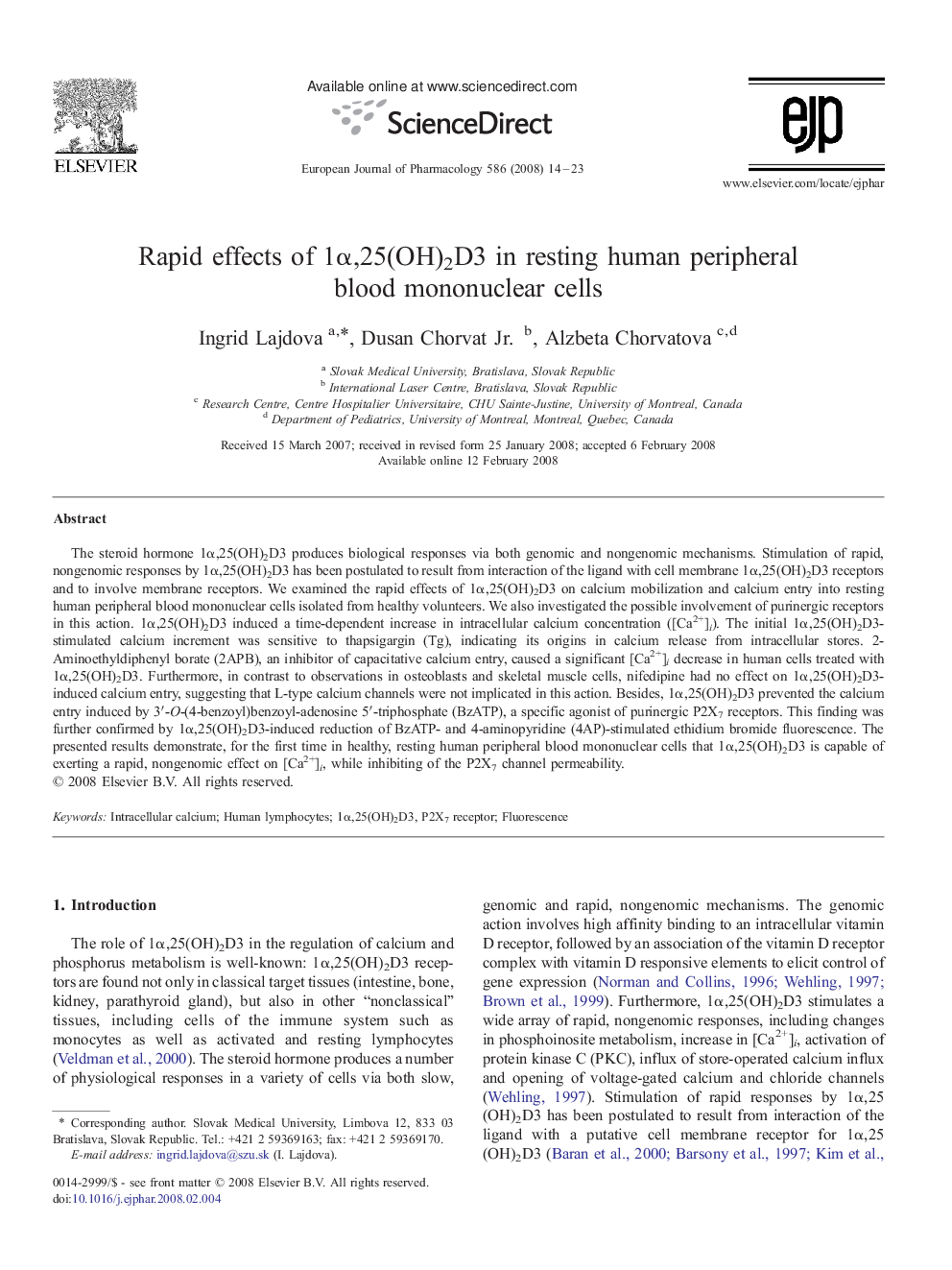| Article ID | Journal | Published Year | Pages | File Type |
|---|---|---|---|---|
| 2535235 | European Journal of Pharmacology | 2008 | 10 Pages |
The steroid hormone 1α,25(OH)2D3 produces biological responses via both genomic and nongenomic mechanisms. Stimulation of rapid, nongenomic responses by 1α,25(OH)2D3 has been postulated to result from interaction of the ligand with cell membrane 1α,25(OH)2D3 receptors and to involve membrane receptors. We examined the rapid effects of 1α,25(OH)2D3 on calcium mobilization and calcium entry into resting human peripheral blood mononuclear cells isolated from healthy volunteers. We also investigated the possible involvement of purinergic receptors in this action. 1α,25(OH)2D3 induced a time-dependent increase in intracellular calcium concentration ([Ca2+]i). The initial 1α,25(OH)2D3-stimulated calcium increment was sensitive to thapsigargin (Tg), indicating its origins in calcium release from intracellular stores. 2-Aminoethyldiphenyl borate (2APB), an inhibitor of capacitative calcium entry, caused a significant [Ca2+]i decrease in human cells treated with 1α,25(OH)2D3. Furthermore, in contrast to observations in osteoblasts and skeletal muscle cells, nifedipine had no effect on 1α,25(OH)2D3-induced calcium entry, suggesting that L-type calcium channels were not implicated in this action. Besides, 1α,25(OH)2D3 prevented the calcium entry induced by 3′-O-(4-benzoyl)benzoyl-adenosine 5′-triphosphate (BzATP), a specific agonist of purinergic P2X7 receptors. This finding was further confirmed by 1α,25(OH)2D3-induced reduction of BzATP- and 4-aminopyridine (4AP)-stimulated ethidium bromide fluorescence. The presented results demonstrate, for the first time in healthy, resting human peripheral blood mononuclear cells that 1α,25(OH)2D3 is capable of exerting a rapid, nongenomic effect on [Ca2+]i, while inhibiting of the P2X7 channel permeability.
